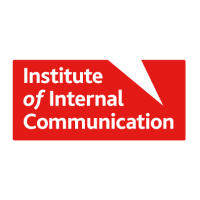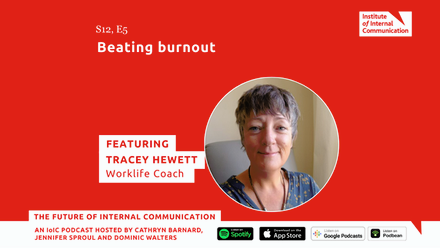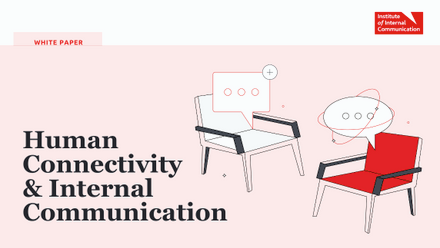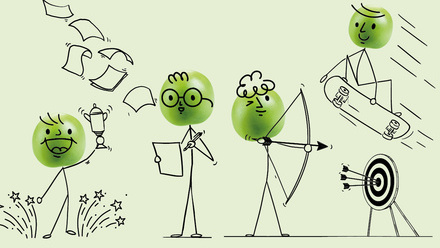Creating workplaces where people feel enabled and enriched

For most of us, work is a rigid routine – same times each day, same days each week. When do you have time between meetings and emails and daily tasks, or even in our precious personal time, to assess where we slot in to the bigger picture?
But take stock we must, says Jane Sparrow, founder of The Culture Builders and co-creator of The Bank of Me, which helps people and teams explore how they contribute to a high-performing team and wider organisational culture. It is based on the idea that each of us is a human bank account – how much we deposit and withdraw from our human bank balance, as individuals and teams, has a direct impact on how well we are able to perform.
Jane recommends thinking about the three Es of endure, enable and enrich – and how much of your role you’d allocate to each.
“How much are you just getting through the day – enduring work? How much of your job is enabling the next step of your career or helping pay the mortgage? And how much is making you feel enriched? A massive part of feeling motivated is growth and feeling fulfilled.”
Ask yourself how the balance looks – but encourage managers to have the same discussions with their team members in order to reorganise or reassess workloads.
“Every day, there are things we all have to endure, but these should be fewer than things that enable or enrich,” says Jane. “If it’s all about endure, that should ring alarm bells. Then it’s time to talk about it, otherwise you end up feeling you don’t matter and that’s the start of a downward spiral.”
Get to know people personally
Technology has helped connect workforces, but can also de-personalise them. Social networks, online community groups and all-company emails make it easy to reach large groups at once, and from a distance. But they target employees simultaneously, on mass, rather than speaking to employees as individuals with different needs and emotions.
“If you want to make your audience feels connected to where you want to go, take time to understand them,” advises Victoria Stuart, manager of commercial internal communications at Phillip Morris International.
“I once met with several contact centre teams and found that what motivated them was being able to leave on time to get home to their kids, so I know not to send comms to that audience out of their working hours as the messages won’t land in the way I need them to.”
Communicate what’s happening in the business, but focus on the human angle.
Too often organisations share successes in an intranet story or press release by reporting how thrilled a vice-president is at this next step at becoming an industry leader, and blah, blah, blah... Internal communicators must challenge leaders’ interest in self-promotion. PR-by-numbers – unemotional, matter-of-fact stories, heavy on market lingo and clichéd quotes – is not a good look.
Who are the people who rolled up their sleeves to undertake the research for an innovative product, or devise a new training programme, or launch a new diversity group? What were their challenges, triumphs, surprises, funny moments along the way?
Telling people stories
Telling people tales is at the heart of the new intranet at the Fast Stream, an accelerated leadership programme designed to develop leaders for the whole civil service.
“We present our transformation through people and voices,” sys John Gannon, head of communication and change at the Fast Stream. “Our staff have fed back that they appreciate reading about our continuous improvement and seeing the big picture, but they particularly love the human focus and warmth of the stories. I’m really proud that staff at all levels have been willing to share so much of themselves and what they do.”
Where you have a better focus on the human in the system, you have “a fertile ground where people thrive”, adds Jane.
“When people ask for more communication, they actually want more connection – more human interaction. We feel valued when we’re emotionally connected, and not if we feel part of a transactional process. Encourage leaders to avoid top-down language – more ‘I’ than ‘we’ – because that creates an environment where people feel more like machines, which leads to toxic behaviours.”
A poor culture won’t necessarily send your business into administration, but there is a human cost – “an inertia, a lack of desire,” argues Jane.
“When I go into those organisations, even if they are doing well, I tell them to imagine how well they could be doing. Small adjustments – using comms to realign people to the purpose – can rocket your business to the next level.”
The importance of saying 'Thank you'
We all want to be recognised – for staying late or getting in early, for taking the initiative, for a great idea or for consistently being on top of our workload. It doesn’t need to be a grand, formal gesture of gratitude. A pay rise, promotion or award nomination says you are valued, but imagine how good you can make people feel by actually saying it? A small sign of appreciation is enough to boost the motivational battery.
“Little things make a difference,” says Jane. “Saying ‘thank you’ is something most people could dial up. But do more than that; say ‘thank you because…’. Tell people the impact of what they’ve done to someone else – a patient, a customer, the wider world. Connect employees to the outcome of their work. Join the dots.”
Making people feel valued and listened to impacts on performance and can create more innovative organisations. A good day at work nourishes your appetite to have better days. Productive, high-performing days. Days where you want to tell other people how great your company is to work for, partner with or buy from.
Whether you have a reward cupboard or you let someone knock off early, consider what acknowledgement is important to each team member. Not everyone craves an opportunity to have their Gwyneth moment at a glitzy ceremony.
“To some, recognition is that ‘Ta-daa’ moment of an award, but others prefer a little card on their desk,” says Jane. “If people don’t feel valued in a way that’s meaningful to them, or if it doesn’t happen at all, over time it can affect their motivation, and then their fulfilment at work, and that can ultimately lead to productivity and mental health issues.”
Belief and behaviour
Jane concludes there are three pillars to a strong culture where people feel like they matter: what we believe, how we behave, and what we use. Belief is around vision, purpose and values; behaviour is whether what we do aligns with the belief. And then there are the tools, systems and process that communicators use to beat the drum and make the connection.
“We need to talk more about the way things are aligned, rather than processes.”
Jane believes internal communicators can be pivotal in developing the cues in leaders’ approach.
“We all know we need to say ‘Thank you, because…’ and that managers and leaders should say, ‘You haven’t taken a day off for three months’ or ask, ‘How’s that piece of work going?’ But we have busy working lives – leaders especially. Communicators need to coach and be that conscience – give little nudges. Support middle managers and build their confidence.”
We cannot put it all at the door of managers. The most successful organisations, Jane adds, are where individuals and teams take joint responsibility for their own “Bank of Me”.
“You can have brilliant people, but if the communication drumbeat doesn’t keep them aligned or the culture doesn’t encourage people to speak up if they do not feel fulfilled, you have loose cannons. You won’t achieve your organisation’s full potential. Where you have that alignment, and people are clear about the purpose and feel connected to the goals and vision, they will deliver their best work.”
Thanking you kindly
We asked IC and employee engagement experts for the more unusual ways to say “well done”.
A colleague had a boss who knew everybody’s favourite vending machine snack – and these treats would “show up” on particularly good days or very tough days.
Lindsay Buhrmann, senior director, employee engagement, Thomson Reuters
We have a “thank you” cupboard crammed full of goodies and anyone can come and get a gift for someone else. The best bit is the personal “thank you” cards that go with the gifts.
Chloe Marsh, head of communications and engagement, RHP Group
I’ve done “magic moments” – strawberries during Wimbledon, ice creams on hot days, meals and massages for colleagues and their families when they’re on holiday.
Ann-Marie Blake, communications consultant
We have monthly ‘HEROES’. Anyone can nominate under one of our categories: H for helpful and human, E for being easy to deal with, R for being responsive and reliable and O is for taking ownership. Handwritten thank-you cards and chocs are handed out at our monthly get-togethers. The key is the card handwritten by our director – it’s personal and goes a long way.
Julie O’Grady, service and engagement manager, National Grid
At Barking, Havering and Redbridge Hospitals, we had Terrific Tickets in a cheque book. You’d give them to people who had done a great job, so they could get a free coffee. Most people pinned them on their noticeboards and didn’t bother cashing them in.
Rachel Royall, communication director, UK healthcare and lifesciences, IBM
In a previous role, we created a “You’ve been caught in the act!” certificate. We gave the certificate and movie tickets to the deserving colleague in front of their peers. It rewarded the individual and reinforced the behaviour.
Tracey Rotan, VP, internal communications, Barclays






